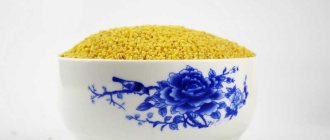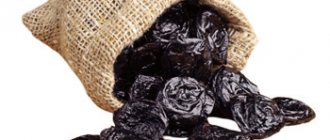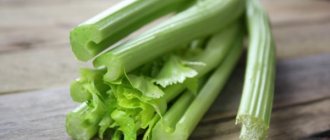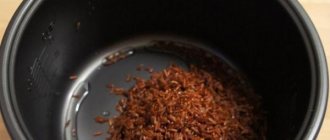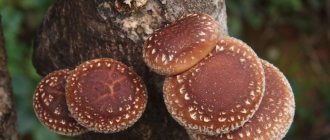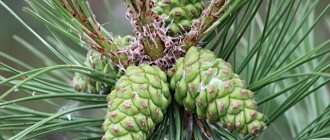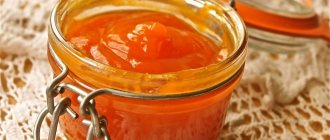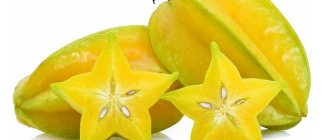Cultural history
Millet is a very common crop. However, one of its interesting features is that it is not found in the wild. This plant can only be seen in artificially cultivated fields. Of course, in nature there are representatives of the flora from the same family as millet. Perhaps some of these plants were once used by humans for cultivation.
People began growing millet a very, very long time ago - around the 3rd millennium BC. Mentions of the benefits of millet are found in ancient Chinese books. In Egypt, millet was considered a sacred plant. The masters of this ancient country often depicted millet on frescoes, for example, with griffins.
How to cook millet porridge (video)
In order to get a good millet harvest, agronomists take into account not only temperature indicators, soil characteristics and fertilizing regime, but also pay attention to what crops grew on the field before. Ideal predecessors for millet are potatoes and other winter vegetables. It is strictly forbidden to sow millet grains on land where corn previously grew, since these crops are from the same family, which means they are affected by the same weeds and pests. It is recommended to sow the plant repeatedly in the same area with an interval of at least 6 years.
Sowing is carried out from the beginning of April to the end of June, the main condition being stable weather and no threat of frost. Since seed germination is not 100%, it is recommended to use seed only of the 1st (highest) category.
Millet mowing begins when at least 75% of all grains have ripened. The remaining fruits can ripen after the harvesting procedure.
Millet is an indispensable cereal for farming and cooking, which, among other things, has a lot of medicinal properties, so the decision to include such a product in your diet will only bring you benefits.
Encyclopedia of Medicinal Plants
Photo of the medicinal plant Millet
Homeland of millet
Researchers have differing opinions regarding which country this crop was first grown in. Some believe that millet is a plant that came to us from India. Others believe that this type of grain was first cultivated in China. Only one thing is absolutely clear: the birthplace of millet is Asia. It was from here that it once came to Europe. Later, millet was brought to America and Africa.
In Russia, this crop is grown mainly only in the arid regions of the black earth strip and in the Volga region.
Benefits of cultivation
This plant is grown less frequently than wheat. Millet, however, along with the latter, is one of the most common grain crops. In terms of popularity, it ranks fourth after wheat, rye and oats.
One of the undoubted advantages of millet, in comparison with many other agricultural plants, is its drought resistance. This crop produces stable yields in any weather. There is practically no risk of losses when cultivating this crop.
Another advantage of millet is its fairly high yield rates. It is inferior to wheat in this parameter. However, if the cultivation technology is followed, farms can actually harvest a lot of millet. In Russia, the yield of this crop is about 10-11 centners per year.
What is the difference between millet and millet
Consumers often confuse several different concepts: millet, millet, millet and wheat groats. In fact, the difference between millet and millet is that if millet is the cultivated crop itself, a cereal, then millet is the ripened grains that are harvested to produce cereals. And millet and wheat cereals are very different types of cereals. Millet is made from millet grains, and wheat is made from durum wheat (durum).
Also read: Red nightshade (bittersweet): description, use in treatment, possible harm
The green part of millet is used as fodder grass
Characteristics of millet: grain composition
This crop has gained its enormous popularity in the world not only due to its productivity and unpretentiousness. The grain of this plant, millet, is a valuable food and feed product. Its composition is unusually diverse. This type of cereal contains more protein than any other. Millet also contains very healthy vitamins B1 and B2, PP, E. They contain grains of this plant and quite a large amount of carotene.
In addition to vitamins, millet also contains many microelements:
- magnesium;
- calcium;
- zinc;
- iodine;
- phosphorus.
This cereal also contains small amounts of nickel, iron, manganese and copper. The nutritional value of 100 grams of millet is 348 kcal.
What varieties are there?
Millet is a plant belonging to the Poa family. The following varieties are currently known:
- millet (Panicum miliaceum);
- capitate (Setaria italica);
- Japanese (Echinochloa frumentacea L.);
- African (Pennisetb typhoideum L).
Capitate millet is also called Italian millet. This type includes two subspecies: mogar and chumizu. In Russia, only Panicum miliaceum is mainly cultivated.
There are thus four varieties of millet. A huge number of varieties of this plant have been bred. In our country alone, about 50 of them are grown. The most popular varieties are Kinelskoe 92, Veselopodolyanskoe 559, and Orlovsky dwarf.
General description of millet
The most common millet in our country is a tall plant (up to 1-2 m) with a hollow, almost cylindrical stem. Some varieties of this crop may be branched. The leaves of millet are very long and quite wide. The straw most often has 5-8 internodes. Both the stem and leaves of millet are pubescent.
The inflorescences of this plant are a panicle, the length of which can be 7-40 cm. The latter indicator depends on the variety of millet. In the center of each inflorescence there is a straight or curved axis. At the base of the lateral branches of some varieties, so-called “pads” are noticeable. At the ends of the branching there is one spikelet.
The millet grain itself can be red, yellow, white or brown. The first type of cereal is the most high-calorie. Grain ripens in panicles, usually not in all spikelets. Sometimes the latter remain underdeveloped. These are mainly the lower spikelets.
Where does millet grow and what does it look like?
An herbaceous annual that reaches 1.5 m and has a well-developed root system, hollow cylindrical branched stems with weak pubescence and long lanceolate leaves - this is what a classic representative of millet, belonging to the Poa family, looks like. The cereal also has a drooping, highly branched panicle inflorescence, which can account for almost a third of the length of the entire plant.
At the end of the branches there is one spikelet. One ear contains two self-pollinating flowers, and by the end of the growing season the plant acquires fruits. The fruit is a rounded grain, its diameter is about 2 mm. The color of the fruit can vary from white and yellow to red and black. Millet grain ripens in July-August, that is, the growing season when planted at the beginning of summer lasts 60-90 days.
India and China are considered to be the homeland of millet, but today the plant can be found throughout almost the entire territory of arid and semi-arid regions. Wild millet can grow 2.5 to 3 km above sea level high in the mountains. Millet is cultivated in the central part of Russia, Ukraine and the Republic of Kazakhstan, in many Asian countries - Mongolia, China, Pakistan (share in world production - 55%), as well as in Africa in Uganda, Tanzania, Senegal, Ethiopia, etc. (share in world production – about 25%).
Where is it used?
Millet is a crop whose grain has enormous economic value. Cereals of this variety are usually used for preparing porridges with water or milk. Millet grain is also used to make flour. Millet is also very popular in livestock farming. Porridge from it can be given, for example, to pigs. However, millet is most often used in poultry farming. It is a particularly valuable product for newly born chickens and turkey poults.
Millet is often used as food for keeping such popular pets as parrots. These colorful birds are usually fed a mixture of millet of different colors. This allows you to provide the bird’s body with the maximum amount of nutrients and beneficial microelements.
It is not only millet grain that has economic value. Green parts of plants are also used in animal husbandry. The nutritional properties of millet straw are superior to those of wheat, rye or oatmeal. Silage from the green parts of this crop is more caloric than corn. Millet is superior to both barley and oats in this regard.
The use of millet in cosmetology
Millet grains have more than once helped those who want to preserve their beauty and youth: zinc, calcium, iron, copper and vitamins contained in millet grains have earned millet a worthy place in many cosmetic products.
In addition to its general benefits for the human body, millet is also used specifically to treat certain diseases. Traditional medicine has long appreciated the benefits of this product.
Important! When treating serious diseases, you should not rely entirely on traditional medicine methods. No matter how effective they may be, they should only be used as a complement to traditional treatment and after consultation with a doctor.
For heart disease
For tachycardia in folk medicine, treatment is practiced with the following remedy:
- Heat 1/3 cup of cereal in a well-heated frying pan.
- Stir the contents so that the color does not change.
- Pour 150 ml of water into the millet and cook over low heat until tender.
The resulting volume is calculated for one day.
For this disease, you need to eat 1 tbsp weekly. spoon of millet flour. To do this, immediately before use, grind the required volume of cereal using a coffee grinder or blender.
For conjunctivitis
When cooking porridge, you need to pour 100 ml more water than during normal cooking. This excess liquid should be carefully drained 5 minutes after boiling, cooled and used to wash the eyes. The porridge itself is applied as a compress.
Millet grain
Millet is a valuable cereal crop. Grain (called millet) is used for making soups, porridge and other culinary products; is a valuable feed for poultry. The growing season is from 60 to 120 days. The plant is thermophilic and resistant to drought, as well as soil salinity, but does not tolerate acidic soils.
Productivity is 14-17 centners per hectare. In rich alluvial soil in 1943, when sowing virgin soil near the Wil River, Kazakh grain grower Chaganak Bersiev received a record crop for cereals of 200 centners per hectare - this is about ten glasses of millet per square meter [3]. Straw and green mass are used as livestock feed.
Millet is one of the most ancient cultivated plants in Eurasia. Millet was first cultivated about 7,000 years ago in China and Transcaucasia. It is cultivated in large quantities in India, China and North Africa, where it is an important agricultural crop. Also grown in the Middle East, Russia and Ukraine.
It practically does not contain gluten, so it can be recommended for nutrition for people suffering from celiac disease - a congenital disease caused by intolerance to the protein of certain cereals.
Avicenna also mentioned the diuretic effect of millet. In folk medicine, millet grain is used in the treatment of pancreatitis, diabetes, liver diseases, cystitis and hemorrhoids. Millet stimulates hematopoiesis. Millet porridge is indicated for hypertension and diseases of the cardiovascular system. However, in older people, millet can cause constipation. For gastritis with high acidity, millet porridge causes heartburn.
In 2014, global millet production was more than 28 million tons, with the largest producer, India, accounting for more than 40% of the total[4].
| Largest millet producers (thousand tons)[4] | |||
| A country | year 2014 | 2016 | |
| India | 11 420 | 10 280 | |
| Niger | 3 322 | 3 886 | |
| China | 2 344 | 1 996 | |
| Mali | 1 715 | 1 807 | |
| Nigeria | 1 385 | 1 469 | |
| Sudan | 1 245 | 1 449 | |
| Burkina Faso | 972 | 1 057 | |
| Ethiopia | 915 | 1 017 | |
| Chad | 695 | 726 | |
| Russia | 493 | 630 | |
The benefits of cereals
Almost all people love millet porridge. It is cooked in both water and milk. They eat this porridge by adding butter to it. However, good taste is not the only advantage of this dish. It is very useful for both adults and children. Some traditional healers even use millet to treat people. Millet grain, for example, has a strong immune-modeling effect on the human body. Millet porridge is also a cleansing product that quickly removes various types of toxins and harmful substances from the body. It is very useful to eat this dish, for example, for people who have been treated with antibiotics for a long time.
Unprocessed millet grain is sometimes eaten by people suffering from various types of endocrine disorders. Even raw water infused with millet can benefit the human body. They drink it to lower blood sugar, improve digestion, and cleanse the body.
Useful tips
To evaluate the valuable qualities of millet, you can try several popular folk recipes at home and see the benefits of this grain from personal experience. We offer you several interesting ways to use millet.
Porridge from 1 tbsp. grains and 1 liter of water with the addition of 1 tbsp. chopped pumpkin and 1 tbsp. l. vegetable oil. Cooked in an enamel bowl, it will help improve the condition of pancreatitis or pancreatic problems.
To speed up recovery from conjunctivitis, add a tablespoon of millet to a glass of water and boil for about 20 minutes. After 2 hours, strain and use the broth to wash your eyes twice a day.
To make a nourishing mask for the face and neck, mix a teaspoon of sprouted millet sprouts and avocado pulp. This cosmetic product is kept on the skin for about 20 minutes, after which it is washed off with warm water.
19, total, today
( 153 votes, average: 4.64 out of 5)
Pitaya (pitahaya): benefits and harm
Pecan
Related Posts
What harm can it cause
The benefits of eating millet can thus be colossal. However, this product, unfortunately, is not suitable for all people. For some, it is an individually intolerable food. Researchers also found that millet can delay the body’s absorption of iodine.
Not only people with intolerance are prohibited from eating millet porridge. This product should not be consumed by those who have inflammatory processes in the colon. Millet grain is also contraindicated if you have low stomach acidity. This product is not recommended for people with a disease such as hypothyroidism.
The benefits and harms of millet
It has been proven that the unique chemical composition of millet helps remove antibiotic residues from the body. Therefore, millet porridge is practically irreplaceable when restoring the body after long-term treatment.
Since ancient times, this cereal has been used in folk medicine. It is still believed that it can be used to lower blood pressure and cure sinusitis and conjunctivitis. And extracts made from millet will help with inflammation of the bladder and exacerbation of pancreatitis.
But you need to know that millet dishes are heavy food. Therefore, people with gastrointestinal problems should be careful. This is also true for diseases of the endocrine system.
Cultivation technology
The cultivation of fields for millet is usually carried out using an improved, conventional plowed or semi-fallow system. In winter, snow removal procedures must be carried out. In spring the plowed land is harrowed. It is not allowed to plow the soil under millet at this time of year. This can lead to drying out of the soil. Instead of plowing in the spring, surface loosening with a cultivator or discs is used.
Millet can be fertilized with both organic and mineral compounds. This crop responds best to phosphorus and nitrogen fertilizing. The amount of fertilizer used depends on the composition of the soil. It is not necessary to water millet throughout the season. This procedure is necessary only in dry years.
Millet is sown in well-heated soil. Otherwise, some of the seeds may simply not sprout. The seeding rate in arid areas is about 2.5 million grains per hectare, in the forest-steppe zone - 3-4 million. Millet is not planted before winter. This crop has only spring forms.
Millet ripens, unfortunately, very unharmoniously. In this case, some of the grain may fall off. Therefore, harvesting this crop should be done on time. Reapers are used to mow millet. The harvest should be done when 80-85% of the grains in the ears are ripe. This allows you to keep losses to a minimum.
